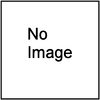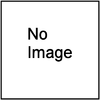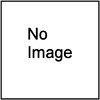 There is little one can say about this RAF manual save to note that it contains details and drawings of every type of ordnance that could be dropped from an aircraft. It covers bombs from 2 to 22,000 pounds, with a multitude of line drawings and a detailed text describing each and every one. As a reference work it is unparalleled, and its worth today for bomb and EOD personnel cannot be estimated.
There is little one can say about this RAF manual save to note that it contains details and drawings of every type of ordnance that could be dropped from an aircraft. It covers bombs from 2 to 22,000 pounds, with a multitude of line drawings and a detailed text describing each and every one. As a reference work it is unparalleled, and its worth today for bomb and EOD personnel cannot be estimated.
 Essentially this is a manual of all air-portable ordnance on issue to the American air force at the end of the war. Every weapon (bombs of all types, cluster containers etc) is described in detail and illustrated with either clear line drawings, good photographs or full-colour drawings. In addition the book starts with some valuable general chapters on safety and handling. Perhaps the only complete manual on this subject.
Essentially this is a manual of all air-portable ordnance on issue to the American air force at the end of the war. Every weapon (bombs of all types, cluster containers etc) is described in detail and illustrated with either clear line drawings, good photographs or full-colour drawings. In addition the book starts with some valuable general chapters on safety and handling. Perhaps the only complete manual on this subject.
 With nearly 300 illustrations and a wealth of detail, this publication covers every aspect of British explosive ordnance - aircraft bombs, mines, grenades, demolition charges as well as fuses and pistols. Published after the war, it describes everything issued to British forces in World War Two and also covers some rather amusing anti-aircraft devices worthy of science fiction rather than practical application. This is a book of serious value to all military historians because without a knowledge of the tools the military art cannot be fully appreciated.
With nearly 300 illustrations and a wealth of detail, this publication covers every aspect of British explosive ordnance - aircraft bombs, mines, grenades, demolition charges as well as fuses and pistols. Published after the war, it describes everything issued to British forces in World War Two and also covers some rather amusing anti-aircraft devices worthy of science fiction rather than practical application. This is a book of serious value to all military historians because without a knowledge of the tools the military art cannot be fully appreciated.
 This manual provides a comprehensive account of chemical munitions (grenades, bombs, sprays etc) used by the British, French, German, Japanese and US forces. It covers both world wars and is fully illustrated. Some of the devices were never used, but it is interesting to note that they were available should the situation and political will demand it.
This manual provides a comprehensive account of chemical munitions (grenades, bombs, sprays etc) used by the British, French, German, Japanese and US forces. It covers both world wars and is fully illustrated. Some of the devices were never used, but it is interesting to note that they were available should the situation and political will demand it.
 This two-volume reprint contains all fifteen of the original War Office pamphlets on enemy ammunition published during the Second World War, together with the index (Vol 13A) and all the colour plates from Vol 15. The two volumes give a very detailed picture of ammunition in use by the Axis forces as it was experienced by the men on the ground. Accompanied by hundreds of drawings, this publication is essential to an understanding of one of the technologies of war - ammunition of all kinds. The volumes cover small arms ammunition, mortar bombs, grenades, gun and howitzer shell, special shells, rockets and many other items. Never before reprinted as a whole with all the appendices and colour plates. Available on one CD.
This two-volume reprint contains all fifteen of the original War Office pamphlets on enemy ammunition published during the Second World War, together with the index (Vol 13A) and all the colour plates from Vol 15. The two volumes give a very detailed picture of ammunition in use by the Axis forces as it was experienced by the men on the ground. Accompanied by hundreds of drawings, this publication is essential to an understanding of one of the technologies of war - ammunition of all kinds. The volumes cover small arms ammunition, mortar bombs, grenades, gun and howitzer shell, special shells, rockets and many other items. Never before reprinted as a whole with all the appendices and colour plates. Available on one CD.
For anyone needing information on virtually every german shell issued or tested during the Second World War, this is the book! It covers ammunition for all types of German guns (including captured weapons), mortar bombs, rockets (but not V-weapons - see German Explosive Ordnance elsewhere on our web site), and fuses of all types. Illustrated with black and white external and cutaway diagrams, it is a gem - especially as it has not been published before except as an information manual for military personnel. Very detailed.
This is the first of two parts of the manuals on German Explosive Ordnance, a complete description of the essential information on German shell, mines, rockets, bombs and other munitions, used by the Germans in the Second World War. Copies are difficult to get hold of. This reprint is in two parts, with Part I covering bombs, fuses, rockets (including the V-weapons), land mines, and grenades. Each item is illustrated and has a detailed description of the device and its relevant fuse or igniter. One of a series of ornance and ammunition manuals published by MLRS. Two volumes in this set.
The second part (of two) volumes on German Explosive Ordnance (and see our earlier reprint of Volume I) covers German shells and fuses. Complete in every detail this is a reprint of the US manual issued in 1953. Every shell and fuse has a full description and there are line drawings and/or sections for almost every item mentioned in what was a large inventory. An essential reference tool for all who are interested in artillery and for EOD personnel who still come across examples of these shells and fuses. See also Volume 1.
 Details of all mines, mine fuses, detonators and booby traps in German service in the second half of World War II.
This pamphlet was issued to troops in mid-1943 and contains details and descriptions of all mines (anti-personnel and anti-tank) in use by the Germans. Virtually nothing new was introduced after this pamphlet was produced, making it important for anyone interested in the subject.
Highly recommended because of the illustrations, which show how these devices worked and the components. Also shows how booby traps were set up and operated.
The pamphlet includes foreign mines in use.
Details of all mines, mine fuses, detonators and booby traps in German service in the second half of World War II.
This pamphlet was issued to troops in mid-1943 and contains details and descriptions of all mines (anti-personnel and anti-tank) in use by the Germans. Virtually nothing new was introduced after this pamphlet was produced, making it important for anyone interested in the subject.
Highly recommended because of the illustrations, which show how these devices worked and the components. Also shows how booby traps were set up and operated.
The pamphlet includes foreign mines in use.
 This is an extract from the much larger manual on German explosive ordnance. It covers all German rockets that were in use during the Second World War. It ranges from the V-1 and V-2 'Vengeance' Weapons to anti-aircraft and -shipping missiles and to artillery substitute rockets. Illustrated with many line drawings it is a valuable aid giving a great deal of useful data on these revolutionary new weapons. The whole of the original manual is also available from MLRS Books.
This is an extract from the much larger manual on German explosive ordnance. It covers all German rockets that were in use during the Second World War. It ranges from the V-1 and V-2 'Vengeance' Weapons to anti-aircraft and -shipping missiles and to artillery substitute rockets. Illustrated with many line drawings it is a valuable aid giving a great deal of useful data on these revolutionary new weapons. The whole of the original manual is also available from MLRS Books.
 The definitive book on Japanese Explosive Ordnance: the book describes in detail military explosives, underwater ordnance, bombs and fuses, ammunition, land mines and booby traps, demolition equipment, pyrotechnics and chemical ordnance. Illustrated profusely with either a photograph or a drawing iof every item included, and accompanied by 10 A3 colour plates for identification of SAA and other ordnance. Essentially the bible for ordnance study of the Japanese armed forces.
The definitive book on Japanese Explosive Ordnance: the book describes in detail military explosives, underwater ordnance, bombs and fuses, ammunition, land mines and booby traps, demolition equipment, pyrotechnics and chemical ordnance. Illustrated profusely with either a photograph or a drawing iof every item included, and accompanied by 10 A3 colour plates for identification of SAA and other ordnance. Essentially the bible for ordnance study of the Japanese armed forces.
 Part of our Ordnance series, this volume covers Italian and French bombs, shells, grenades, mortar ammunition and mines. As items from the Italian and French arsenals were used by others in the Second World War (including resistance units) this is of significance to all who are interested in explosive ordnance. Illustrated with over 250 line drawings or photographs this is a piece of history rarely available on the open market until now.
Part of our Ordnance series, this volume covers Italian and French bombs, shells, grenades, mortar ammunition and mines. As items from the Italian and French arsenals were used by others in the Second World War (including resistance units) this is of significance to all who are interested in explosive ordnance. Illustrated with over 250 line drawings or photographs this is a piece of history rarely available on the open market until now.
 This British War Office pamphlet covers all Italian mines and traps up to the end of the participation of Italy in the Second World War. It covers mines, igniters, prepared charges and improvised mines. Illustrated with a number of good sectioned drawings showing the internal details of each item catalogued. An important suppplement to Italian and French Ordnance (also published by MLRS books).
This British War Office pamphlet covers all Italian mines and traps up to the end of the participation of Italy in the Second World War. It covers mines, igniters, prepared charges and improvised mines. Illustrated with a number of good sectioned drawings showing the internal details of each item catalogued. An important suppplement to Italian and French Ordnance (also published by MLRS books).
 This is a compendium of four important manuals on bomb reconnaissance and disposal. The four manuals are: Bomb Reconnaissance and Protection against Unexploded Bombs (1941 and 1952 - British War Office), Disposal methods for enemy bombs and fuses (US Navy 1942) and German Fuses (extracted from Enemy Explosive Ordnance - United States War Department 1946). What the pamphlets show is the threat of unexploded bombs and ordnance, and the methods devised to render such devices safe to handle and destroy. All four components are important in understanding this rather dangerous craft, but none more so that the 1942 manual which gives details of the equipment used to cope with German ingenuity in making fuses booby-traps as well. If you ever wondered what the butterfly bomb looked like, or the clock stopper, then this is the book for you. Amply illustrated with photographs and line drawings.
This is a compendium of four important manuals on bomb reconnaissance and disposal. The four manuals are: Bomb Reconnaissance and Protection against Unexploded Bombs (1941 and 1952 - British War Office), Disposal methods for enemy bombs and fuses (US Navy 1942) and German Fuses (extracted from Enemy Explosive Ordnance - United States War Department 1946). What the pamphlets show is the threat of unexploded bombs and ordnance, and the methods devised to render such devices safe to handle and destroy. All four components are important in understanding this rather dangerous craft, but none more so that the 1942 manual which gives details of the equipment used to cope with German ingenuity in making fuses booby-traps as well. If you ever wondered what the butterfly bomb looked like, or the clock stopper, then this is the book for you. Amply illustrated with photographs and line drawings.
 This book was written for the American shell manufacturing industry as a guide to contractors on both the basics of the shell and how to make it. It also covers in detail British, Russian and French shell types. Although technical it gives an excellent picture of shell manufacture, especially in Great Britain in 1916, and is worthy of a place on any bookshelf concerned with the First World War.
This book was written for the American shell manufacturing industry as a guide to contractors on both the basics of the shell and how to make it. It also covers in detail British, Russian and French shell types. Although technical it gives an excellent picture of shell manufacture, especially in Great Britain in 1916, and is worthy of a place on any bookshelf concerned with the First World War.
 The pamphlet covers all small arms ammunition (including American) up to .50 cal. issued to British Forces in 1945, together with details of packaging and pallet composition for transport. It also contains data tables on ammunition and a series of line drawings especially of ammunition boxes and markings.
The pamphlet covers all small arms ammunition (including American) up to .50 cal. issued to British Forces in 1945, together with details of packaging and pallet composition for transport. It also contains data tables on ammunition and a series of line drawings especially of ammunition boxes and markings.
MLRS Books provide a download service for military historians and those interested in military history.
We specialise in primary source material and accounts which are assembled from such sources. We also publish new titles of specific interest in the field of military history and military genealogy.
MLRS Books offers a catalogue of resources via download only and
these are not printable. Should you want physical copies of our products, we
recommend visiting Caliver Books.
Payment is via Paypal, and prices are as quoted. Hopefully you will be pleased with your purchase,
however, do e-mail if it isn't and we'll try to fix it.






